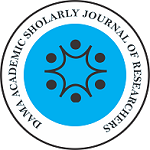Authors: Nia Sari1, Bagong Suyanto2, Windhu Purnomo3, Sri Adiningsih4
1Doctoral Program of Health Sciences, Faculty of Public Health, Airlangga University, Indonesia
2Faculty of Social Sciences and Political Sciences, Airlangga University, Indonesia
3&4Faculty of Public Health, Airlangga University, Indonesia
Abstract
The street children consume low-nutritious and unhealthy drinking water, use poor sanitation facilities, have difficulty accessing health services, and are in poor living conditions such as places to sleep, diet, occupation, and others. Such conditions increase the risk of contracting communicable diseases, contracting non-communicable diseases, injuries and disabilities.This study aimed to analyze the effect of mobility on morbidity of street children in Surabaya, with cross sectional approach. Subjects were 137 street children in several shelter houses in Surabaya selected by simple random sampling technique. Indicators of mobility were push factors, pull factors, intervening obstacles and personal factors; while the indicators of morbidity were illness and disease. Data were collected through questionnaires and in-depth interviews, then analyzed using Structural Equation Modeling. The results showed that mobility had negative effect on morbidity, with path coefficient = -0.173.
Keywords: Mobility, Morbidity, Street children

